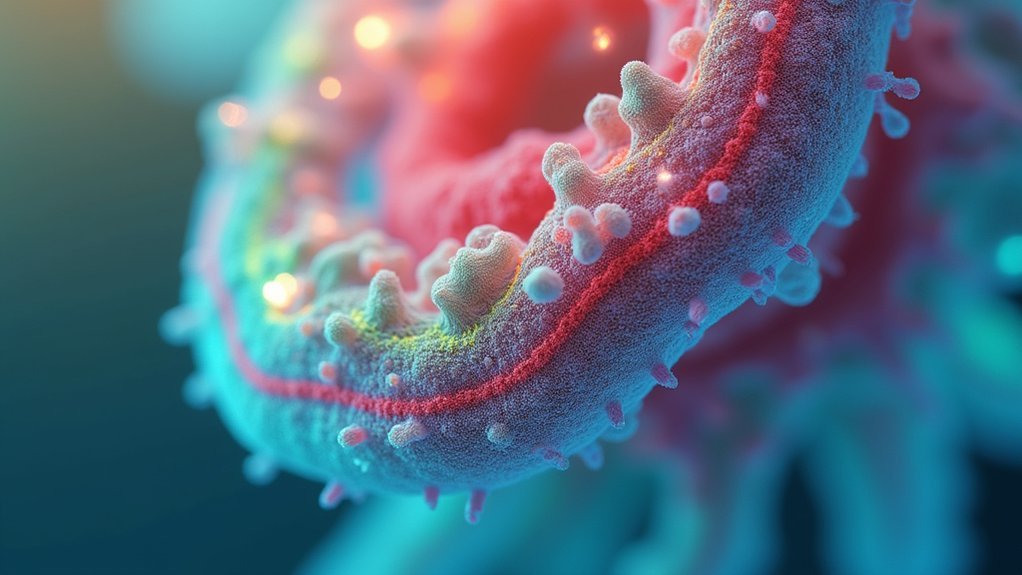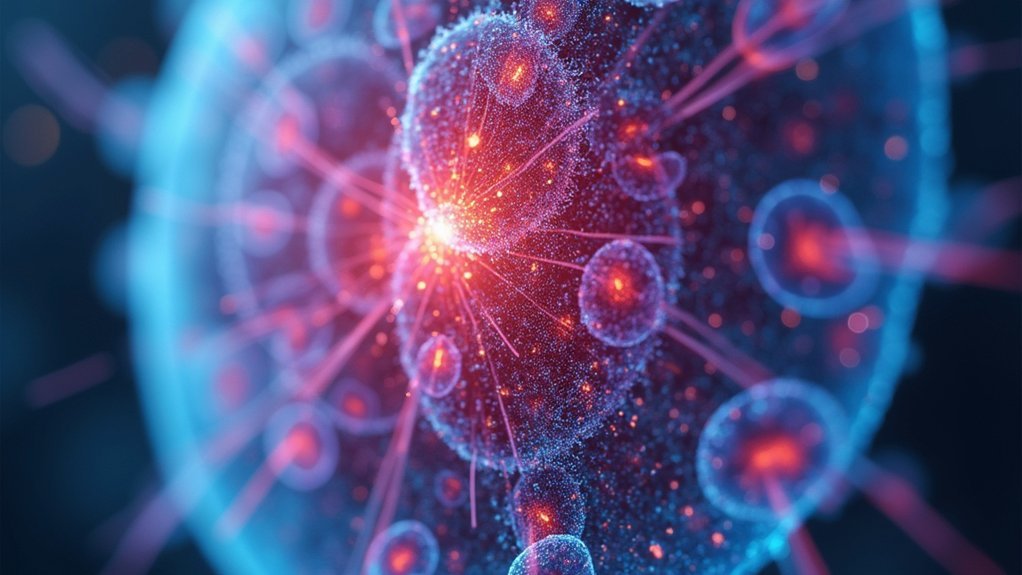To clean up raw scientific images effectively: First, understand your equipment’s unique noise profile and shoot at ideal ISO settings. Second, use layer-based selective noise reduction to target specific areas while preserving essential details. Third, maintain data integrity with non-destructive editing techniques and regular comparisons to original files. These approaches will enhance clarity without compromising the authenticity of your scientific findings. Discover how these techniques transform microscopy data interpretation.
Analyzing Noise Profiles in Microscopy Imagery

When examining microscopy images, you’ll quickly discover that noise isn’t simply a universal problem but rather a complex signature unique to each imaging system.
Both chrominance and luminance noise commonly appear during high-ISO imaging, requiring you to understand your equipment’s specific noise profiles for accurate analysis.
Finding the right exposure balance is vital—lower ISO settings reduce noise but may underexpose your specimens. Advanced noise reduction techniques can help you overcome these challenges.
Consider using layer-based editing for targeted adjustments to specific image areas, optimizing clarity where scientific detail matters most.
Tools like Topaz DeNoise prove particularly valuable for microscopy images, effectively minimizing noise while preserving the fine details essential for scientific investigation.
Layer-Based Selective Noise Reduction Techniques
While standard noise reduction often treats the entire image uniformly, layer-based selective techniques offer you considerably more control and precision. By creating individual layers for different elements in your scientific images, you’ll achieve customized adjustments tailored to each area’s specific noise profile.
Start by separating your microscopy image into distinct layers—one for your specimen and another for the background. Apply targeted noise reduction techniques to each layer using tools like Topaz DeNoise, ensuring fine details remain intact.
Isolate specimens and backgrounds on separate layers to apply precise noise reduction where needed while preserving crucial details.
For effective layer masking, use a hard brush with soft edges to create smooth changes between treated and untreated areas. This selective application preserves critical details while aggressively reducing noise in less important regions.
Layer-based noise reduction consistently produces cleaner images with enhanced detail retention, particularly valuable when working with high ISO conditions common in scientific imaging.
Preserving Data Integrity While Enhancing Image Clarity

Scientific image enhancement requires strict adherence to data integrity principles. When processing your raw files, always employ non-destructive editing techniques by using layers in programs like Photoshop, ensuring your original data remains intact throughout your workflow.
You’ll achieve better image clarity by adjusting luminance and chrominance sliders strategically based on your camera’s noise performance at specific ISO settings. Apply targeted noise reduction through layer masks to control precisely which areas receive enhancement while protecting critical data regions. This selective approach maintains the authenticity of your scientific findings while improving visibility.
Remember to regularly compare your processed images against the original raw files. This verification step confirms your enhancements clarify the data without distorting the scientific evidence—balancing improved visual presentation with unwavering commitment to accuracy.
Frequently Asked Questions
Why Do Raw Images Look Washed Out?
Raw images look washed out because they’re unprocessed, retaining full sensor data without contrast or color adjustments. You’ll need to edit them to bring out proper exposure, saturation, and contrast that camera-processed JPEGs would automatically apply.
How to Clean a Picture Without Ruining It?
Start with gentle adjustments to your ISO settings, then use Lightroom’s noise reduction sliders strategically. For precise control, try layer masking in Photoshop to clean specific areas while preserving important details you’ll want to keep.
What Is the Best App to Clean up an Image?
Adobe Photoshop is your best option for cleaning up images with its precise layer-based editing. If you’re on a budget, try GIMP. For noise reduction specifically, Topaz DeNoise AI can’t be beat.
How to Clean an Edited Image?
To clean an edited image, you’ll want to apply selective noise reduction, use layer masking for targeted areas, adjust sharpening settings carefully, and consider specialized tools like Topaz DeNoise for professional results.
In Summary
You’ll achieve cleaner scientific images by understanding noise profiles, applying selective reduction techniques, and maintaining data integrity throughout processing. Remember, it’s not about making your images look pretty—it’s about revealing the true data while removing artifacts. By mastering these three approaches, you’re ensuring your visual data stays scientifically valid while becoming more interpretable to your audience.





Leave a Reply